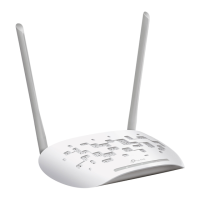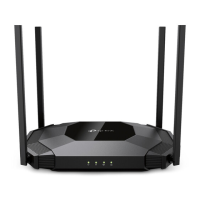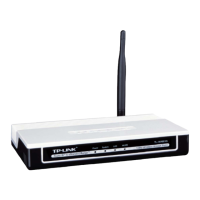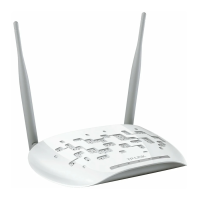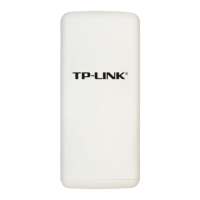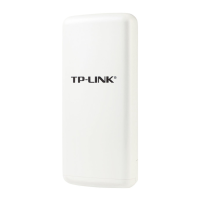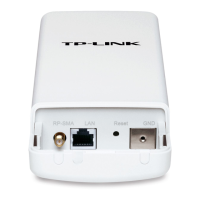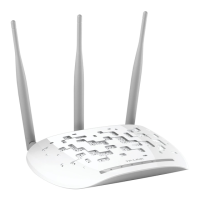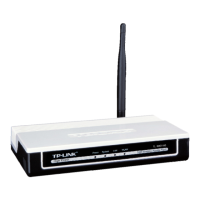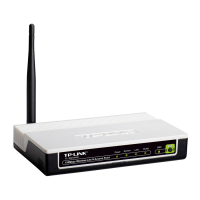Do you have a question about the TP-Link TL-WA1201 and is the answer not in the manual?
Details the TP-Link access point's functions and benefits for creating high-speed wireless networks.
Describes the physical layout of the access point, including LEDs and ports on the front and back panels.
Guidance on selecting an optimal location to place the access point for best performance and connectivity.
Details configuration for Access Point, Range Extender, Client, and Multi-SSID modes for different network needs.
Step-by-step guide on creating a new TP-Link ID for managing your access point and cloud services.
Instructions for changing ID info, managing user IDs, and using the Tether app for remote access point management.
Customizing wireless network names (SSIDs), passwords, and security options for different operation modes.
Explains how to use Wi-Fi Protected Setup (WPS) for easy and secure wireless connection of client devices.
Covers advanced wireless configurations like WMM, AP Isolation, and Beacon Interval, recommending default settings.
View client statistics and monitor traffic throughput for network performance analysis.
Setting up a captive portal for customer Wi-Fi, including authentication and redirection to specific web pages.
Blocking or allowing specific devices using Blacklist or Whitelist features to control network access.
Configuring static IP addresses for the access point and managing LAN settings to avoid IP conflicts.
Configuring the DHCP server, setting IP address pools, and reserving IP addresses for specific client devices.
Configure the access point's system time, time zone, and display language for proper operation and scheduling.
Manage the status indicator LEDs, allowing them to be turned off immediately or during specific scheduled periods.
Set up SNMP for network monitoring by configuring community names, syscontact, sysname, and syslocation.
Enable automatic device rebooting based on continuous ping failures to a specified host for connection status monitoring.
Instructions for updating the access point's firmware via auto, online, or local file methods to improve features and performance.
Save settings for backup, restore previous configurations, and reboot the access point for performance.
Rebooting the access point immediately or scheduling periodic reboots to enhance performance and clear cache.
Securely change the password used to access the web management interface of the access point.
Set up a recovery mechanism to retrieve a forgotten login password using preset security questions and an email address.
Control access to the management interface by allowing specific devices or all devices via MAC address-based authentication.
Utilize diagnostic tools like Ping and Traceroute to troubleshoot and test network connectivity issues.
Save system logs locally or send them via email for troubleshooting, allowing selection of log types and levels.
Important guidelines for safe operation, handling, and environmental considerations for the device.
Provides meanings for various symbols found on the product label, including voltage, safety, and recycling information.
Details the TP-Link access point's functions and benefits for creating high-speed wireless networks.
Describes the physical layout of the access point, including LEDs and ports on the front and back panels.
Guidance on selecting an optimal location to place the access point for best performance and connectivity.
Details configuration for Access Point, Range Extender, Client, and Multi-SSID modes for different network needs.
Step-by-step guide on creating a new TP-Link ID for managing your access point and cloud services.
Instructions for changing ID info, managing user IDs, and using the Tether app for remote access point management.
Customizing wireless network names (SSIDs), passwords, and security options for different operation modes.
Explains how to use Wi-Fi Protected Setup (WPS) for easy and secure wireless connection of client devices.
Covers advanced wireless configurations like WMM, AP Isolation, and Beacon Interval, recommending default settings.
View client statistics and monitor traffic throughput for network performance analysis.
Setting up a captive portal for customer Wi-Fi, including authentication and redirection to specific web pages.
Blocking or allowing specific devices using Blacklist or Whitelist features to control network access.
Configuring static IP addresses for the access point and managing LAN settings to avoid IP conflicts.
Configuring the DHCP server, setting IP address pools, and reserving IP addresses for specific client devices.
Configure the access point's system time, time zone, and display language for proper operation and scheduling.
Manage the status indicator LEDs, allowing them to be turned off immediately or during specific scheduled periods.
Set up SNMP for network monitoring by configuring community names, syscontact, sysname, and syslocation.
Enable automatic device rebooting based on continuous ping failures to a specified host for connection status monitoring.
Instructions for updating the access point's firmware via auto, online, or local file methods to improve features and performance.
Save settings for backup, restore previous configurations, and reboot the access point for performance.
Rebooting the access point immediately or scheduling periodic reboots to enhance performance and clear cache.
Securely change the password used to access the web management interface of the access point.
Set up a recovery mechanism to retrieve a forgotten login password using preset security questions and an email address.
Control access to the management interface by allowing specific devices or all devices via MAC address-based authentication.
Utilize diagnostic tools like Ping and Traceroute to troubleshoot and test network connectivity issues.
Save system logs locally or send them via email for troubleshooting, allowing selection of log types and levels.
Important guidelines for safe operation, handling, and environmental considerations for the device.
Provides meanings for various symbols found on the product label, including voltage, safety, and recycling information.
| DSL WAN | No |
|---|---|
| Ethernet WAN | Yes |
| WAN connection type | RJ-45 |
| Wi-Fi band | Dual-band (2.4 GHz / 5 GHz) |
| Wi-Fi standards | 802.11a, 802.11b, 802.11g, Wi-Fi 4 (802.11n), Wi-Fi 5 (802.11ac) |
| Top Wi-Fi standard | Wi-Fi 5 (802.11ac) |
| WLAN data transfer rate (max) | 867 Mbit/s |
| WLAN data transfer rate (first band) | 300 Mbit/s |
| MIMO type | Multi User MIMO |
| Cabling technology | 10/100/1000Base-T(X) |
| Fit AP mode features | Wireless distribution system (WDS) |
| Networking standards | IEEE 802.11a, IEEE 802.11ac, IEEE 802.11b, IEEE 802.11g, IEEE 802.11n |
| Receiver sensitivity | 5 GHz: , 11a 6 Mbps: -95 dBm, 11a 54 Mbps: -81 dBm , 11ac VHT20(MCS0): -94 dBm, 11ac VHT20(MCS8): -71 dBm , 11n HT40(MCS0): -91 dBm, 11n HT40(MCS7): -71 dBm , 11ac VHT80(MCS0): -88 dBm, 11ac VHT80(MCS9): -63 dBm , , 2.4 GHz: , 11g 54Mbps: -78 dBm , 11n HT20(MCS0): -92 dBm, 11n HT20(MCS7): -74 dBm , 11n HT40(MCS0): -88 dBm, 11n HT40(MCS7): -72 dBm |
| Ethernet LAN data rates | 10, 100, 1000 Mbit/s |
| Transmitting power (CE) | \u003C20dBm(2.4GHz), \u003C23dBm(5.15GHz~5.25GHz) dBm |
| Transmitting power (FCC) | \u003C30dBm(2.4GHz&5GHz) dBm |
| Security algorithms | 64-bit WEP, 128-bit WEP, WPA, WPA-PSK, WPA2, WPA2-PSK |
| Device type identification | DHCP options |
| Service Set Identifier (SSID) features | Multiple SSIDs |
| Supported network protocols | IPv4, IPv6 |
| USB 2.0 ports quantity | 0 |
| Ethernet LAN (RJ-45) ports | 1 |
| Output current | 1.5 A |
| Output voltage | 12 V |
| Placement | Table |
| Certification | CE, FCC, RoHS |
| Product color | White |
| Antenna type | External |
| Antennas quantity | 4 |
| Storage temperature (T-T) | -40 - 70 °C |
| Operating temperature (T-T) | 0 - 40 °C |
| Storage relative humidity (H-H) | 5 - 90 % |
| Operating relative humidity (H-H) | 10 - 90 % |
| Number of products included | 1 pc(s) |
| Compatible operating systems | Microsoft Windows 98SE, NT, 2000, XP, Vista™ or Windows 7, 8, 8.1, 10, MAC OS, NetWare, UNIX or Linux |
| Package type | Box |
| Package depth | 255 mm |
| Package width | 400 mm |
| Package height | 69 mm |
| Package weight | 860 g |
| Depth | 145.5 mm |
|---|---|
| Width | 225 mm |
| Height | 37 mm |

